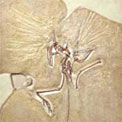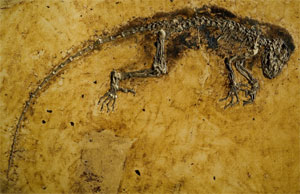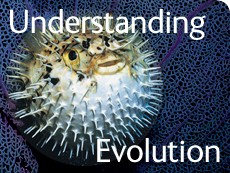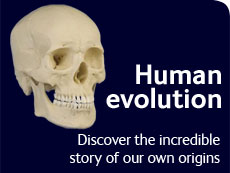Ida - the clue to primate evolution?
The discovery of Darwinius masillae
The discovery of a 47-million-year-old fossil of a lemur-like creature, Darwinius masillae, has given scientists an insight in to the evolution of early primates. It was found in Messel Pit in Germany and, unlike many fossil primates, it is incredibly well-preserved. Image © PLoS
Find out moreWhy is Ida significant?

Dr Jerry Hooker, fossil mammal expert at the Museum, explains why Ida is so well-preserved and examines her features in detail. A close look at her ankle bones, jaw and teeth shows her relationship to other primates.
But why is Ida, Darwinius masillae, so important? And what can she tell us about the early stages of primate evolution?
Watch the video
Missing links
There is some debate about whether Ida is the 'missing link' between primates and the rest of the mammal kingdom. A transitional form is the name scientists give to any species that bridges the gap between a new family on the tree of life and its ancestors.
Transitional forms

Dr Angela Milner, Museum fossil expert, explains the importance of transitional forms and talks about some important examples, such as the intermediary between fish and amphibians. Angela also explains more about the fossil record, its gaps, how fossils are studied, and where Ida fits in.
Angela Milner discusses the fossil record
Famous missing link

Famous missing links that have been filled by past fossil finds include the link between dinosaurs and birds, which was made clear by the discovery of Archaeopteryx. This fossil was also found in a quarry in Germany and it had both the feathers of a bird and the teeth and claws of a dinosaur.
Archaeopteryx and the great debate


